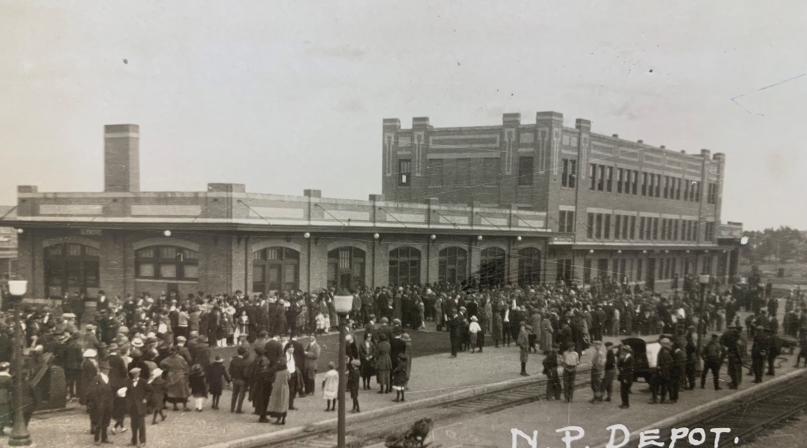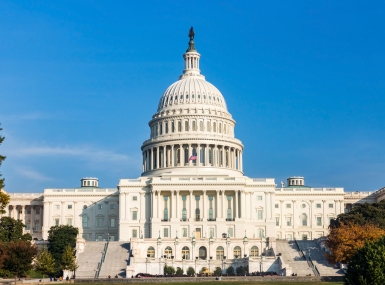Montana counties unite to revive passenger rail efforts

Key Takeaways
Montana’s Missoula County and Dawson County have 129,000 residents and 500 miles between them, and 120,000 of those people live in the former. But they also have something else that spans those differences: a drive to renew long-dormant passenger rail service on the south side of the Treasure State.
The Big Sky Passenger Rail Authority has already gained 17 participating counties before the coalition celebrates its first year in November, with communities big and small seeing the social and economic opportunities that will be within reach once the state diversifies its transportation infrastructure.
“This is an effort, a need and desire that transcends any party line or socio-economic line,” said Jason Stuart, executive director of the Dawson County Economic Development Council, near the state’s eastern border. “You have counties that are incredibly diverse, from tiny little rural counties with 1,000 people to the counties that count as ‘urban’ in Montana.”
Stuart serves as the authority’s vice-chairman.
Learn More
“From the moment I came to eastern Montana, I’d felt the big divide and long-standing resentment toward the western part of the state, where all the political power and money is,” Stuart said. “I’ve never seen an issue that unites east and west like this before.”
There is rail service, the Empire Builder, running the width of Montana, crossing the northern part of the state on its way between Chicago and the West Coast. That’s been it since 1979, when Amtrak canceled the North Coast Hiawatha line. Missoula County Commissioner Dave Strohmaier said there aren’t as many residents who remember that service the way they once did and convincing a new generation of Montanans to believe that kind of service was possible was daunting before the authority launched in 2020. Strohmaier is chairman of the rail authority.
“Interest waxed and waned in the 2000s,” he said. “Once there was a feasibility study, it came back with a big price tag, it took the wind out of people’s sails. There was always enthusiasm for rail service, it was just subterranean.”
The rail authority’s composition looks to make a difference this time. A state law passed in the 1990s allows multiple counties to form their own rail authority. The authority has cast a net to 26 counties that were former passenger rail counties or counties that are adjacent to them, all good candidates for service restoration or expansion.
“The effort had been led for 40 years by passionate individuals, advocacy groups and municipalities, cities and towns,” Strohmaier said. “What we lacked was the institutional, governance infrastructure to move an effort like this forward in a sustainable fashion over the number of years it will take to make this happen. The counties are making a difference, because by our nature, we work across jurisdictional lines to accomplish something bigger. We’re contiguous in a way that municipalities, cities and towns aren’t.”
The potential return of rail service has enormous practical implications for many of the counties along its route.
“Look at the route from Glendive to Helena,” Stuart said. “It’s 450 miles, there’s one way to get there and for four or five months out of the year, driving can be a dicey, difficult proposition. Getting to a doctor’s office or the VA could kill someone.”
When it came time for Dawson County to make its contribution to the rail authority, the total came from the county government, the city of Glendive and the Dawson County Tourism Business Improvement District.
“The hotels want people coming through town more and they’ll pay to help make that happen,” Stuart said. “They want to give people a reason to come and visit, explore, stay a few days or be a place to stay if someone is driving to town to board a train.
“One of the most popular places people travel is to Sandpoint or Coeur d’Alene, Idaho and this train would take them right there. Or to North Dakota or Minnesota to visit family.”
With hopes high for funding from the proposed infrastructure bill in Congress, including $50 million for the Department of Transportation to conduct a nationwide study on restoration of long-distance passenger rail service and $2.4 billion for passenger rail enhancements, members of the authority anticipate some traction, particularly if they can win over remaining statewide officials. The effort already has endorsements from Sens. Jon Tester (D) and Steve Daines (R).
“It’s time to strike while the iron is hot,” Strohmaier said. “In my most wildly optimistic dreams, we’re talking three-to-five years until we see things happening, but I don’t want to be having this conversation in 10 years, waiting for another study.”
In addition to the bipartisan consensus the plan has from its U.S. senators, Strohmaier sees some positive by-products coming from the rail authority’s work.
“I’ve seen elected officials get together on this who wouldn’t work together on anything else and it could be the start of a lot more regional cooperation,” he said. “These relationships we’re building are changing the way leadership works in Montana.
“This is a big bold initiative and goes well beyond potholes and zoning and the stuff that counties oftentimes deal with. It’s a multiyear effort and something we haven’t done before. I cannot think of an issue that has garnered as much bipartisan support as this.”
It encouraged Strohmaier to see the more rural counties join the authority early.
“They’re keenly aware of their demographics, they have an aging population and recognize that this has become a matter of transportation equity,” he said.
Stuart said though passenger rail culture is centered in the Northeast states, it could very much become a way of life in southern Montana.
“It’s easy to look at a big place like Montana and say ‘not enough people live there to make rail service make sense,’ but there are more people living along the southern line than did when they stopped service in 1979,” he said. “This isn’t going to get done just because 18 counties want it to happen, it’s going to be a regional effort, it will be a regional collaboration.”

Attachments
People wait at the former Glendive, Mont. passenger rail depot in Dawson County. Part of the depot still exists and is in use by BNSF Railway. Photo courtesy of the Dawson County Economic Development Council
Related News

U.S. House of Representatives passes SPEED Act and other permitting reform bills
On December 18, the U.S. House of Representatives passed the SPEED Act (H.R. 4776). The SPEED Act would strengthen county involvement in decision-making and make needed commonsense reforms to the federal environmental review process.

Counties and Railroads: Shared Priorities for the Next Surface Transportation Bill
County leaders from across the country have a vital opportunity to ensure their infrastructure priorities are front and center.

House lawmakers introduce bipartisan legislation to support World Cup local transportation needs
On December 2, U.S. Reps. Rick Larsen (D-Wash.-02) and Burgess Owens (R-Utah-04) introduced the Transportation Assistance for Olympic and World Cup Cities Act (H.R.6348), a bipartisan effort to strengthen local transportation systems in communities preparing to host major international sporting events
